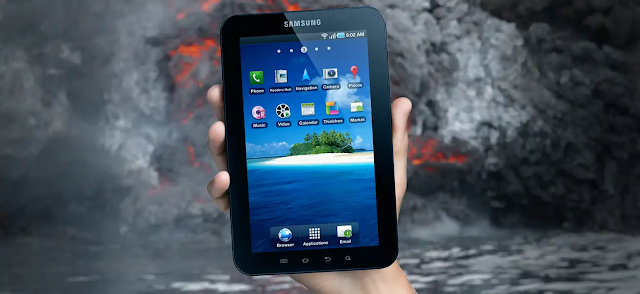Google's poor rollout of Android Honeycomb, bad and cheap tablets and poor performance can be blamed for the terrible state of Android tablets.

It’s very easy to blame the manufacturers for the poor sales of Android tablets.
I don’t mean manufacturers like Samsung or Motorola but rather companies that operated in China that produced very cheap, often unusable devices to unsuspecting consumers. Consumers who purchased these products then began to associate its poor performance not to the device but rather to the Android OS itself. The cheap Android devices at the time came from 'off-brands' who made devices in any shape and size and almost always at a low cost.
These devices had plastic displays of terrible resolutions, often were knockoffs of the iPad of the period, had no customer service and had appalling battery and processor performance. Consumers were, of course, rightfully unsatisfied. However, they instead attributed the product's fault to Android, and not to the cheap components that ran it. This is similar to Android users who migrate to iOS after having their experience with Android marred by some $99 phone with some god awful Mediatek processor. Then they are some how surprised that the Apple device they now have is superior and fail to realise their old Android device was a third of the price of their new Apple phone / tablet. Most users still view Android and iOS devices as two camps. Despite Android manufacturers being so significantly different from one another consumers think of a Samsung Tablets and cheap, no-name Chinese tablets as being essentially the same device merely because both possess the same operating system.
With that being said, Google never really appeared to care about their Tablet OS. Many of their apps were still in a mobile format and never took advantage of the change in screen size. There were merely phone apps that were stretched to fill the screen. Unlike the iPad which had bespoke applications, that were made for it. For early Android tablets, Android was not 'tablet friendly'. The original Samsung tablet ran Android 2.2 Froyo, an OS designed for a 4-inch screen was now being stretched to accomodate a 10-inch tablet.
It wasn't until the release of the Motorola Xoom, when a proper Android Tablet was released. The tablet ran Android 3.2 Honeycomb, in which Google had designed an OS to run on different sized screens. Unfortunately, the OS was rushed out to capitalise on the iPad's success, and boy, did it show. Honeycomb was half baked at best and ran with problems ranging from freezing, poor memory management to compromised security. During this period, the iPad stormed ahead, leaving Android tablets in the dust, the iPad was faster, had a better display and most crucially, had a better App library and user experience. Even today, although Android may dominate the mobile landscape, in the word of tablets, it trails behind Apple in marketshare in the United States. This is despite offering a greater selection of brands and models, features and processors, and cheaper devices.
Android Honeycomb was rushed out to capitalise on the iPad's success, and boy, did it show.
The manufacturers aren’t to blame, the users aren’t to blame, Google is. Rather than exclusively licensing Honeycomb, they allowed anybody to make Android tablets. This led consumers to be oversaturated with terrible choices, that sullied their user experience and forever tainted their view of the operating system. My first experience of Honeycomb was a Chinese tablet I purchased from Aldi for $199. I can still remember the terrible lag when scrolling through different pages of the homescreen, the 5-10 second delay in closing apps and the constant crashes when you clicked too many things, too quickly.


Write a comment
Post a Comment